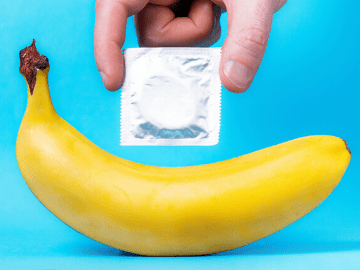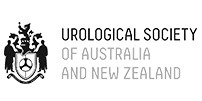If you’ve had a vasectomy and are now considering starting or expanding your family, you might be wondering, “Can vasectomy be reversed?” The good news is that it can be reversed. However, many men who have had the procedure worry about reversing it. You may feel both anxious and hopeful, looking for clear and reliable information to help you decide. We understand this feeling and we’re here to help you.
At Katelaris Urology, we understand the emotional and physical aspects of this significant decision. With years of experience and a high vasectomy reversal success rate, we are here to provide you with the expert knowledge you need.
In this article, you will learn about how vasectomy reversals work, its success rates, and what factors can influence the outcome. By the end, you’ll have a comprehensive understanding of whether a vasectomy reversal is a viable option for you.
How Does a Vasectomy Reversal Work?
A vasectomy reversal surgery is a surgical procedure aimed at restoring fertility in men who have previously undergone a vasectomy. The surgery reconnects the vas deferens, the tubes that carry sperm from the testicles to the urethra, allowing sperm to be present in the semen once again.

Understanding what a vasectomy reversal is can help you feel more informed and confident about your decision.
The Surgical Techniques
There are two main techniques used in vasectomy reversal surgery: vasovasostomy and vasoepididymostomy.

- Vasovasostomy: The most common method involves stitching the cut ends of the vas deferens back together. This procedure is usually done when there is no blockage or damage to the vas deferens beyond the vasectomy point.
- Vasoepididymostomy: This technique is used when there is a blockage in the epididymis, the coiled tube where sperm matures. The vas deferens is attached directly to the epididymis in this procedure. It’s more complex and often used if the vasectomy was done many years ago, causing secondary blockages.
Understanding the differences between these two surgical techniques can help you discuss options with your surgeon and choose the best approach for your situation. At Katelaris Urology, our experienced team will guide you through the decision-making process and help you select the most appropriate procedure based on your needs.
The Procedure
Curious about what happens during a vasectomy reversal? Understanding the procedure can help ease any anxiety and prepare you for what to expect. Here’s a simple breakdown of the steps involved.
- During the surgery, usually done under general anesthesia, the surgeon makes a small cut in the scrotum to reach the vas deferens.
- Using a high-powered microscope, the surgeon reconnects the tubes with fine stitches. This process can take several hours, depending on the case’s complexity and the technique used.
- After surgery, patients might feel discomfort and experience swelling, which can be managed with pain relief medications and supportive underwear.
- Most men can return to normal activities within a week, but it may take several months for sperm to appear in the semen and fertility to be restored.
Knowing the steps involved can lessen any fear or hesitation about the procedure. Dr. Katelaris will explain each step in detail, ensuring you understand what to expect from surgery to recovery. By understanding each stage, from surgery to recovery, you’ll be better prepared for the journey ahead and can approach it with confidence.
Do Vasectomy Reversals Work?
One of the most pressing questions for men considering a vasectomy reversal is its effectiveness. The success of the procedure largely depends on several factors, including the time elapsed since the vasectomy, the patient’s age, the presence of any underlying fertility issues, and the surgeon’s skill and experience.
Success Rates
Success rates are a major concern for anyone considering a vasectomy reversal. Let’s talk about numbers to what you can expect.
Vasectomy Reversal Success Rate
Success rates can vary, and they’re typically measured in two ways: the return of sperm to the semen (patency rate) and achieving pregnancy (pregnancy rate).
- Patency Rate: This refers to the presence of sperm in the ejaculate after the reversal. The patency rate can range from 70% to 95%, depending on the time since the vasectomy and the technique used.
- Pregnancy Rate: This is the ultimate goal for many couples and can vary between 30% and 75%. Factors such as the female partner’s age and fertility can also impact this rate. It’s important to note that while the return of sperm is a positive indicator, achieving pregnancy also depends on the couple’s overall fertility health.
Understanding these numbers can help you gauge the likelihood of success for your specific situation. But what factors can influence these rates?
Success Factors
Several factors can influence the success of a vasectomy reversal. Knowing these can help set realistic expectations.
- Surgical Technique
Vasovasostomy usually has a higher success rate than vasoepididymostomy because it is less complex and has fewer complications.
- Time is a Big Factor
The time since your vasectomy plays a huge role. Generally, the shorter the time since the vasectomy, the higher the chances of success. After about 10 years, the success rates start to dip. Still, you don’t have to lose hope. Successful outcomes have been reported even after 20 years.
- Surgeon’s Experience Matters
The experience and skill of the surgeon are crucial for the procedure’s success. Surgeons who specialise in microsurgical techniques and have done many reversals usually have higher success rates. Opting for a highly experienced urologist, like Dr. Katelaris, can make a significant difference.
- Patient Factors
The patient’s age, overall health, and any other fertility issues (in either partner) can affect the outcome. It’s important to have a thorough evaluation and discussion with a specialist to understand individual chances of success.
By understanding these factors, you can better assess your chances of a successful vasectomy reversal.
Final Words
Vasectomy reversals can be very effective, with success rates depending on several factors. At Katelaris Urology, we have high success rates and offer personalised patient care. If you are thinking about a vasectomy reversal, it is important to consult with a specialist to evaluate your situation and discuss the best options for you.
Making the decision to undergo a vasectomy reversal is significant and should be made with a thorough understanding and expert guidance. For personalised advice and to learn more about how a vasectomy reversal can work for you, schedule a consultation with Katelaris Urology.
References:
Amarin, Z. and Obeidat, B. (2005) ‘Patency Following Vasectomy Reversal: Temporal and Immunological Considerations’, Saudi Medical Journal, 26(8).
Matthews, G.J., Schlegel, P.N. and Goldstein, M. (1995) ‘Patency following microsurgical vasoepididymostomy and vasovasostomy: Temporal considerations’, Journal of Urology, 154(6), pp. 2070–2073. doi:10.1016/s0022-5347(01)66697-7.
Myhre, J. and Sifris, D. (2024) What is the success rate of vasectomy reversal?, Verywell Health. Available at: https://www.verywellhealth.com/vasectomy-reversal-7570234 (Accessed: 18 June 2024).
Namekawa, T. et al. (2018) ‘Vasovasostomy and vasoepididymostomy: Review of the procedures, outcomes, and predictors of patency and pregnancy over the last decade’, Reproductive Medicine and Biology, 17(4), pp. 343–355. doi:10.1002/rmb2.12207.
Vasectomy reversal success rates: Reverse Vasectomy Success Stories (2023) The Turek Clinic. Available at: https://www.theturekclinic.com/best-vasectomy-can-reversed-reversal-procedure-success-rates-you/ (Accessed: 18 June 2024).







